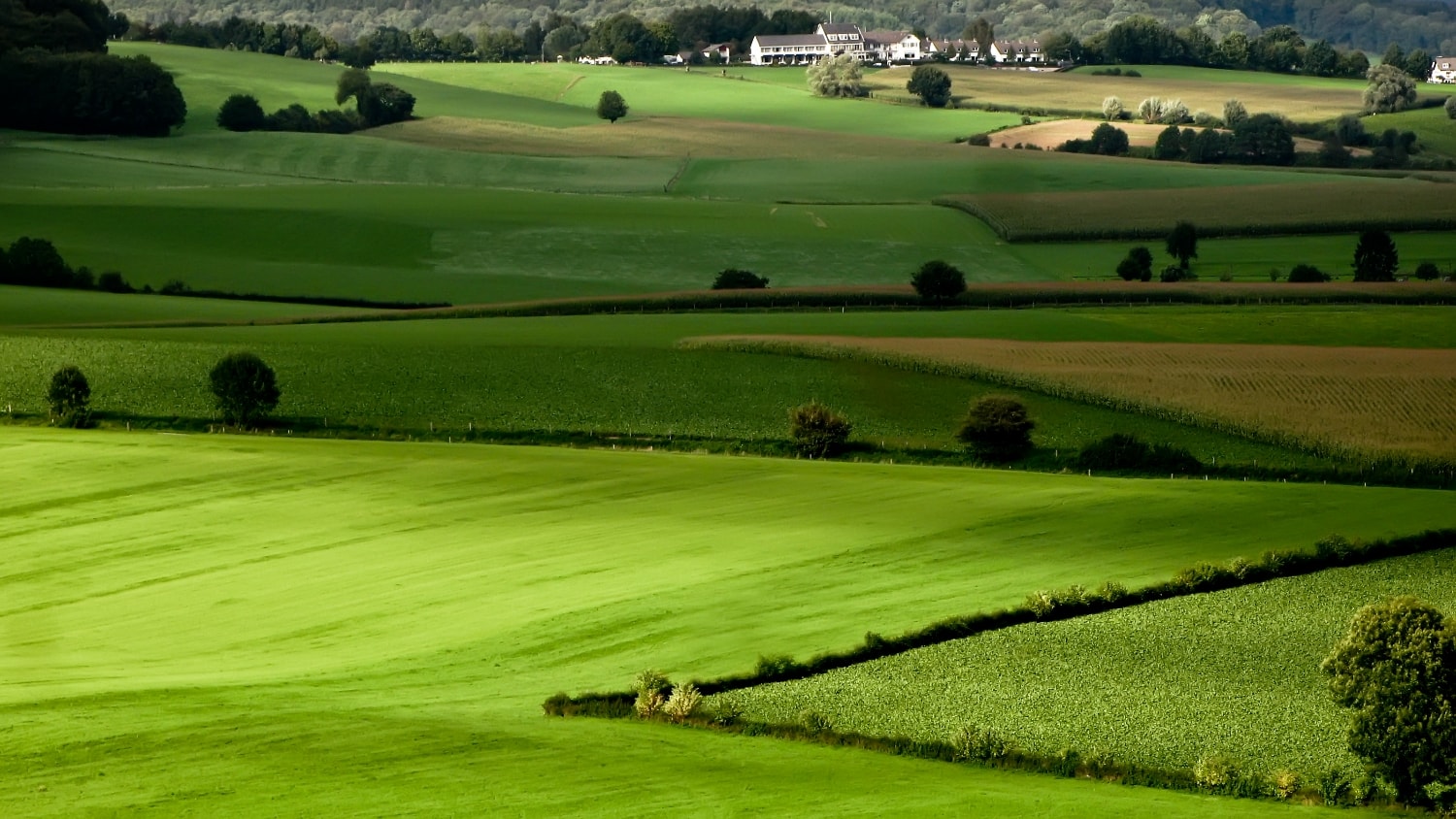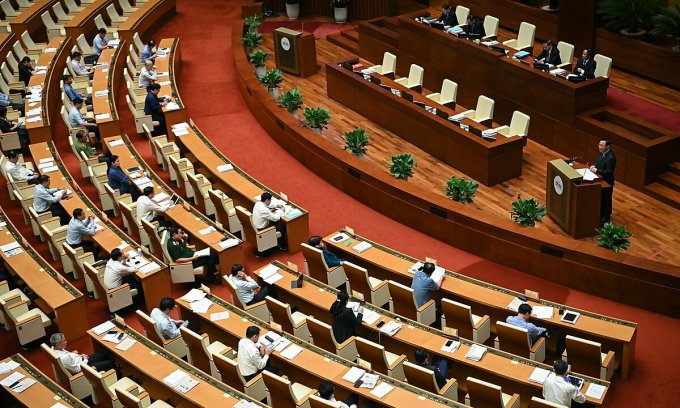What kind of agricultural land cannot be converted in Vietnam?

Agricultural land is an important type of land in production and life. If there is another use purpose, we have the right to change the use purpose, however, there are exceptions. So about the matter “What kind of agricultural land cannot be converted in Vietnam?” Let’s find out with LSX in the article below.
Legal grounds
- Land Law 2013
What is agricultural land?
According to the provisions of the current land law of Vietnam, agricultural land is allocated to people to serve the needs of agricultural production, including soils with similar characteristics as the main means of production for various purposes. purposes such as cultivation, animal husbandry, afforestation.. forestry, is the premise of all production processes. Agricultural land is involved in food and food production industries such as fisheries, cultivation and animal husbandry.
Agricultural land is simply understood as a type of land used for agricultural production. This is the way to call the type of land according to the purpose of land use.
Classification of agricultural land types
According to the provisions of the Land Law 2013, based on the purpose of land use, agricultural land is divided into many different types of land, including:
First, agricultural land for annual crops
In fact, agricultural land for the purpose of growing annual crops is the type of land used to grow crops with a very short time to grow and harvest, such as cash crops and rice plants. In which there is land for annual rice cultivation other than land used for specializing in growing plants from planting to harvesting for no more than one year, using this land to grow crops, sugar cane, flowers, etc. …To determine this land is the land for annual crops, the competent authority shall base on the current land use status and then issue a certificate of land use right.
Second, agricultural land is used for livestock
Agricultural land with the purpose of raising livestock is a type of agricultural land with the main purpose of raising livestock for the purpose of raising livestock, poultry, etc.. for example, land specialized in growing natural grass as fodder for livestock.
Third, land for perennial crops
Agricultural land with the purpose of growing perennial crops is the land for growing plants with a growth period of more than one year. The growth time of trees from planting to harvest is longer than annual crops grown on soil, for example, woody plants such as casuarina, eucalyptus, including trees with a long growth period like annual crops, but when harvested, they can be harvested for many years, such as fruit trees, mulberry trees..etc.. Agricultural land for perennial crops and agricultural land for annual crops are different in growing time. , the time to harvest the tree, not based on the short or long time of use of the land
Fourth, production forest land
According to the land law, production forest land is one of the very important parts of agricultural land, which is natural forest, but this land is allocated by the State to organizations for the purpose of management, protection and forest development. In particular, the State often implements projects and plans to allocate forest land to organizations, households and individuals directly engaged in forestry production on these lands according to the quota assigned by the State. As for the production forest land in places far from residential areas, the State will assign this land to organizations for forest management and protection that can be combined with the business of landscapes, eco-tourism areas, In addition, this production forest land can also be leased by the state to economic organizations, households and individuals for the purpose of implementing afforestation projects or building eco-tourism areas.
Fifth, protective forest land
Agricultural land as protection forest is land used for the purpose of protecting water sources, protecting the land, as a part to help prevent erosion, limit natural disasters, and balance the ecological environment and the environment, climate conditioning. Protection forest land includes many different purposes such as watershed protection forest; protective forests used to block the wind and prevent sand from flying; protection forests to break waves and encroach on the sea; protection forests to protect the ecological environment. According to the provisions of the 2013 Land Law, the State allocates protective forest land to protection forest management organizations to manage, protect, zoning, reforestation and afforestation according to the provisions of the Law on Land and plans on land use already approved by competent state agencies, and may combine land use for other purposes in accordance with the law on forest protection and development.
Accordingly, the Protection Forest Management Organizations contract out protection forest land to households and individuals living there to protect and develop forests. The State shall allocate protective forest land to organizations, households and individuals that have the need and ability to manage, protect and develop forests living in the protected forest area but that protection forest does not yet exist. forest management and planning organization. Since then, organizations, households and individuals have taken measures to protect forests and combine them with other purposes in accordance with the law on forest protection and development; Regarding the authority to lease protective forest land, the provincial-level People’s Committees shall decide to lease protective forest land to economic organizations in areas associated with landscape business and eco-environmental tourism under the forest canopy. Communities that are allocated protective forests by the State according to the provisions of the Law on Forest Protection and Development shall be allocated protective forest land for forest protection and development; have rights and obligations as prescribed in the Law on Forest Protection and Development.
Sixth, Special-use forest land
Agricultural land is a protection forest established with the main purpose for the purpose of preserving nature, balancing the national forest ecosystem, in addition, for the purposes of serving scientific research, combining economic development such as scenic spots, amusement parks, or considered as historical relics that need to be protected. However, when the State allocates this land, it shall be assigned to a special-use forest management organization for management and protection according to the master plan and plan on land use approved by a competent state agency. , may combine land use for other purposes in accordance with the law on forest protection and development.
For special-use forest management organizations, short-term contracts of special-use forest land in a very tight protection zone are given to organizations and individuals that have not yet been able to move out of that area to protect forests. special-use forests contract special-use forest land in the ecological restoration subdivision to households and individuals living stably in that area for forest protection and development. Competent state agencies decide to allocate or lease land for each special use for the purposes of production, research or in combination with the purposes of defense and security protection. In addition, provincial-level People’s Committees shall decide to lease special-use forest land to economic organizations in areas associated with landscape business and eco-tourism.
Seventh, Land for aquaculture and land for salt production
For aquaculture land, it is usually land for aquaculture, usually inland areas including ponds, lakes, rivers, streams, etc.. lands with water surface including allocated farms. for the purpose of aquaculture and development of the aquaculture industry
Salt-making land is defined as the land area in the planning for salt production approved by competent authorities, including: Industrial-scale salt production land and manual salt production land. In which households and individuals are allocated locally or their land is converted to, in addition, the State also leases these lands to overseas Vietnamese economic organizations. to implement projects on salt production. This is a particular piece of land suitable with the advantage of our country’s long coastline, so the State highly encourages and prioritizes areas capable of making salt to serve life and industry.
Eighth, Other Farmland
Other agricultural land includes land used for construction of greenhouses and other types of houses for cultivation purposes, including forms of cultivation not directly on the land; building livestock barns permitted by competent authorities; land for cultivation, animal husbandry and aquaculture for the purpose of study, research and experiment; nursery land for seedlings and seed for agriculture
What kind of agricultural land cannot be converted in Vietnam?
Currently, the land law does not stipulate which types of agricultural land cannot be converted to residential land or the list of types of land easily converted to residential land. The law only generally states that there are two grounds for allowing conversion of use purposes, including:
– Annual land use plan of the district that has been approved by a competent state agency
– Demand for land use expressed in investment projects, applications for land allocation, land lease, change of land use purpose.
However, based on the purpose of use, it is possible to name the types of land that are difficult to apply for conversion to residential, including: – The type of land that is difficult to be converted to residential land because it has been planned by the State for use according to the purpose. pre-determined and also because this is not the land of households and individuals but is used by the State for the purposes according to the planning, including:
+ Land for building office (TSC)
+ Land for building headquarters of non-business organizations (DTS)
+ Land for construction of cultural facilities (DVH)
+ Land for construction of medical facilities (DYT)
+ Land for construction of education and training institutions (DGD)
+ Land for construction of sports facilities (DTT)
+ Industrial park land (SKK)
+ Land for production of building materials and ceramics (SKX)
+ Land used for mineral activities (SKS)
+ Land for energy works (DNL)
+ Land with historical and cultural relics (DDT)
+ Land of rivers, streams, canals, canals and streams (SON)- The type of land that is difficult to be converted to residential land because the State has a protection policy including:
+ Land specialized in growing wet rice; Upland rice land; The remaining land specialized in wet rice cultivation: It is difficult to move to residential areas because the State has policies to protect rice land, restricting the conversion of rice land to non-agricultural purposes. Pursuant to Clause 1, Article 134 of the 2013 Land Law, in case it is necessary to transfer a part of the rice land to use for other purposes, the State shall take measures to supplement the land area or increase the efficiency of land use for cultivation paddy.
+ Protection forest land: This type of land is mainly used to protect water sources, protect soil, prevent erosion, landslides, flash floods, pipe floods, combat desertification, limit natural disasters, and regulate climate, contributing to environmental protection, national defense and security, combining eco-tourism, convalescence and entertainment; provision of forest environmental services; classified according to the critical level, the State has a strict protection policy.
+ Special-use forest land: This type of land is mainly used for conserving natural forest ecosystems, forest biological genetic resources, scientific research, and preserving historical-cultural relics, beliefs, and landscapes combined with eco-tourism; convalescence and entertainment except for strictly protected subdivisions of special-use forests; providing forest environmental services, it is also the type of land that is protected by the State’s policies.
+ Land for salt production: This type of land is the land area in the salt production development planning, so it is protected, limited and it is difficult to change the use purpose.
Services of LSX
Prestigious professional services: Firstly, the team of consultants and consultants for many years in the field of civil status, and customer support.
On-time: Certainly, with the motto “Get your lawyer right at your fingertips”, we ensure the service always performs on time. The rights and interests of customers always come first.
Cost: Besides, LSX’s service costs are highly competitive; depending on the nature of the particular case. So, we want our guests to have the best possible service experience. Therefore, costs which guaranteed to be the most suitable and economical for customers.
Confidentiality of client information: Finally, all brand information of client LSX will be 100% confidential.
Please contact us immediately if you have any questions about “What kind of agricultural land cannot be converted in Vietnam?”
Contact LSX
Finally, hope this article is useful for you to answer the question about “What kind of agricultural land cannot be converted in Vietnam?” If you need any further information, please contact LSX Law firm: at +84846175333 or Email: [email protected]
Please see more
- Procedure of land acquisition for project implementation in Vietnam
- Sequence of recovering encroached land in Vietnam
- Land valuation income method in Vietnam
Frequently asked questions
Agricultural land use tax is a type of tax directly levied on organizations, households and individuals that use agricultural land for the purpose of agricultural production in order to ensure a fair and reasonable contribution among land users. agriculture and create conditions for land users to change crop structure according to the State’s orientation.
In order for your family to build a house in France on agricultural land, your family needs to change the purpose of land use first, then proceed to separate the plot if you want to divide it among all 3 family members. The amount that your family has to pay will be the difference between the price of residential land and the price of your family’s land for perennial crops, the land price depends on the locality and the location of each household’s land plot. There will be different prices.
According to Clause 1, Article 6 of Circular 30/2014/TT-BTNMT, households and individuals prepare 01 set of dossiers of application for change of land use purpose as follows:
– An application for change of land use purpose according to the form.
Certificate (Red Book, Pink Book).
Conclusion: So the above is What kind of agricultural land cannot be converted in Vietnam?. Hopefully with this article can help you in life, please always follow and read our good articles on the website: lsxlawfirm.com




